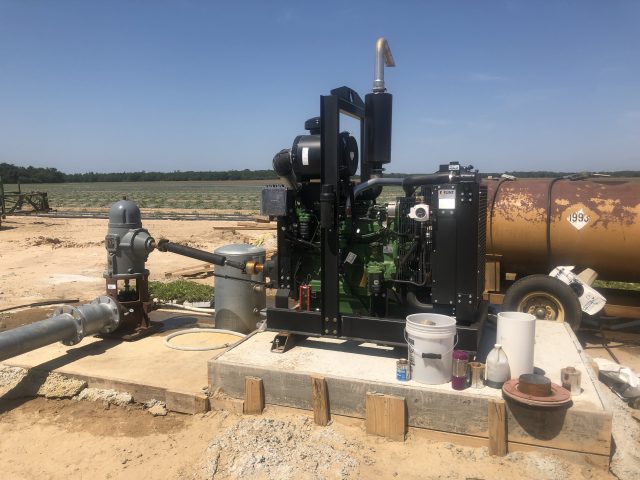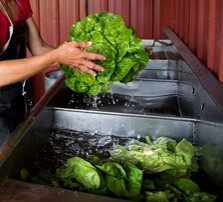Supplemental water is necessary for good crop yields in fruit and vegetable production. Water quality is equally as important as water quantity when it comes to fruit and vegetable production. Unfortunately, water can transport harmful microorganisms from adjacent lands or other areas of the farm. The water source and how the water is applied influence the risk for crop contamination to occur.
Water is used for various purposes during production: harvesting, and handling fresh produce, irrigation, cooling, frost protection, as a carrier for fertilizers and pesticides, and for washing tools and harvest containers, hand washing, and drinking.
The FDA’s Food Safety Modernization Act (FSMA) proposed water compliance date is not until 2022, but it will be here before you know it. Water quality is an important component of a Food Safety Plan. A good first step in ensuring compliance with FSMA water quality standards is to evaluate the water sources on the farm. For more information on compliance dates, please visit the Produce Safety Alliance’s Website.
Water Source
The three common sources of water used on farms are surface water, well water, and municipal water.
Surface water includes ponds, lakes, rivers, and streams. It is at the highest risk for contamination because there is limited control on what flows downstream or from adjacent land. Wild and domestic animals, manure piles, and sewage discharges are all potential sources of contamination in surface waters.
The most common water source for North Florida farms is well water. Well water used for farming is at a moderate risk of becoming contaminated, when compared to surface water (highest risk) and municipal water (lowest risk). Wells are at a higher risk of becoming contaminated when located near flood zones, septic tanks, drainage fields, and manure/compost storage areas. The risk of contamination is further heightened if the well was not constructed properly, or if the casing is cracked. Wells should be properly sited, constructed, and maintained to keep contamination risks lower.

A recently installed well pump on a North Florida watermelon farm. Photo Credit: Matt Lollar, University of Florida/IFAS Extension
Well Design and Construction
- Preliminary Investigation – A preliminary investigation helps determine the design of a well. Existing wells in the area should be checked out to help determine depth and potential capacity. If records for the area aren’t available, then test holes should be drilled to determine the best location for water production.
- Casing – Casing material should be determined based on site characteristics. The casing needs to extend above the surface water level to reduce contamination risks. The casing is sealed in place with grout. A poor grouting job can also promote contamination. Casing diameter is selected based on well capacity.
- Well Screen – A commercially designed well screen should be installed to minimize hydraulic head loss. Screen diameter and material should be determined based on the preliminary investigation results. Gravel packing is recommended in some areas.
For more recommendations on well design and construction, please visit the University of Florida/IFAS publication: Design and Construction of Screened Wells for Agricultural Irrigation Systems
Please note that it is important to monitor your well water quality at least twice during each growing season. A list of FSMA approved water testing methods can be found at Cornell University’s Law School Website.
- Crops to Consider for Fall Planting - September 26, 2025
- Benefits of Manure Fertilizers and Analysis - March 21, 2025
- Mushrooms – A Crop Worth Consideration for the Back Forty - October 4, 2024

